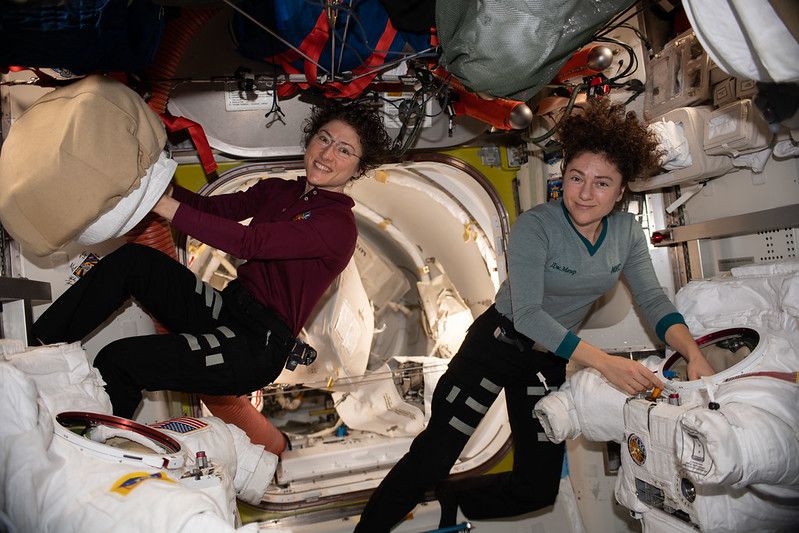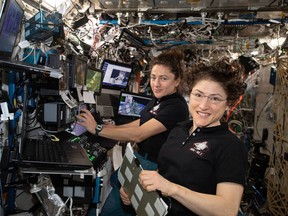Crewing a Mars Voyager Spacecraft with Female Astronauts
"On average, women tend to be smaller than men, and so this metabolic advantage may be greater in women, as suggested by our calculations.""This is why we concluded that there may be specific metabolic or life support resource operational advantages to all-female crews during future human space exploration missions.""At this point in time, I don't think our study will have any influence [on the gender of the crew for a Mars mission], and I don't think it should.""The two studies we performed, one on theoretical male and one on theoretical female astronauts, are just that — theoretical."Jonathan Scott, researcher, French Institute for Space Medicine and Physiology
 |
Lead author of a new study published in April in the journal Scientific Reports -- Jonathan Scott and his colleagues -- found that female astronauts' requirements for food, water and oxygen are significantly less than needed by their male astronaut-counterparts. Their study looked at requirements for a four-person crew on a hypothetical three-year trip to Mars and back.
This study is one of a growing body of research that suggests female astronauts use far fewer resources of necessity than males. Any reduction in the amount of food, water and oxygen required to sustain life on a years-long journey to Mars and back would generate considerable savings, even to the degree that a mission might become a success, evading failure.
The Scientific Reports study calculated an all-female crew would have a total energy expenditure of between 5 and 29 percent less than would an all-male crew of similar stature, a differential accountable by female astronauts being lighter than males of a similar height, and requiring lower oxygen resources. The study team drew on astronaut data for both sexes back to the 1950s
Early NASA planners had considered female astronauts for the same reason of resource consumption, accompanied by the belief that females might cope with more tolerance to the tight spaces and isolation linked to such an epic journey. Since that early period of space exploration dating back 70 years, the idea of all-female flights was periodically considered.
In the year 2000, NASA had seriously considered deploying an all-female space shuttle flight. In that same year a paper was published, entitled "An all-woman crew to Mars: a radical proposal", but one that has remained a proposal with dim expectations it would be carried out from its status as a potential to a commitment.
 |
"[International Space Station modules have a diameter of about 4.2 metres; three metres in diameter. might represent the dimensions of a Mars ship.] As such, crews composed of individuals with smaller statures may also have potential habitability benefits (i.e., perceived volume and sensation of ‘crowdedness’) when co-working in the same module.""In addition, there may also be reduced crew ‘traffic interactions’ where crew members need to move to allow another to pass and/or share equipment or workstations."Scientific Reports-published study
Labels: Female Astronauts, NASA, Space Exploration, Study

0 Comments:
Post a Comment
<< Home